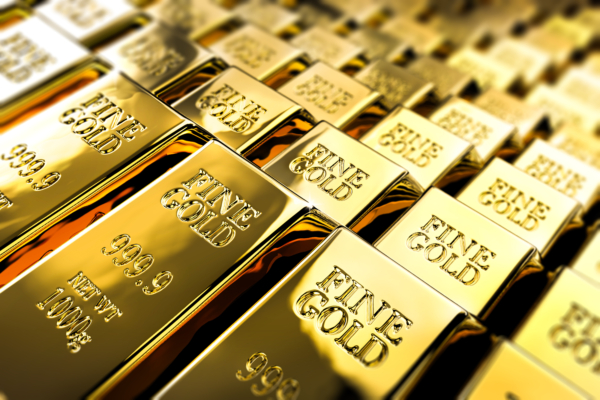Gold has traditionally been seen as a safe haven asset, and its price has risen by about 30% this year, exceeding the benchmark S&P 500 index’s 20% increase. According to CNN, some investors believe that the rising trend of gold indicates that despite record highs in the stock market, there are still concerns about the health of the economy.
During times of uncertainty, traders often turn to gold, betting that if the economy falters, gold can preserve value better than stocks, bonds, and other assets like currency.
Federal Reserve Chairman Jerome Powell stated in a press conference last Wednesday (September 18) after the central bank meeting that the purpose of the significant half-point rate cut was to address further weakness in the labor market. Some economists point out that even after the rate cut, the economic situation remains unclear, and once the unemployment rate starts to rise, it becomes challenging to slow down. The unemployment rate in August was 4.2%, which is relatively low by historical standards but has increased from the 3.8% of the same period last year.
At the same time, another precious metal that often moves in sync with gold – silver, has surged by about 34% this year, outperforming gold.
It is worth noting that the rise in silver prices often reflects market optimism about the economy picking up pace again, as silver is a key material used in infrastructure construction, as well as electronics, jewelry, and tableware. Additionally, silver plays a crucial role in the transition to clean energy.
JPMorgan Chase researchers stated in a report on Monday that with the Fed rate cuts, they expect gold to continue its upward trend towards a target price of $2,850 per ounce by 2025. On Monday, a few Fed officials left the door open for further rate cuts, indicating that current rates are still significantly impacting the U.S. economy.
The Fed’s rate cut actions have also increased the attractiveness of gold relative to Treasury bonds. As a safe haven asset, the yield on 10-year Treasury bonds in the U.S. was about 3.7% as of Tuesday afternoon Eastern Time, lower than the over 4% yield investors were getting a few months ago.
“At the current stage, there really is no alternative to a positive view on gold,” said Will Rhind, CEO of GraniteShares, in an interview with CNN.
According to Reuters, analysts say that after a series of dovish remarks from Fed officials and escalating tensions in the Middle East, gold prices have soared to historic highs.
IG market strategist Yeap Jun Rong stated, “A series of dovish remarks from the Fed continue to support gold prices.” Zero-yield gold will become the preferred investment during low-rate environments and geopolitical turbulence.
“The establishment of a new front line between Israel and Hezbollah in the Middle East has also driven some safe-haven flows into gold to hedge against any broader regional conflict and geopolitical risks,” he said. “The tension in the region may remain elevated for a longer period, possibly leading to a continued bullish trend in gold prices.”
Israeli Prime Minister Benjamin Netanyahu vowed to allow tens of thousands of Israelis who evacuated from the northern border area to return home. On Monday, the Israeli military intensified strikes against Hezbollah. The Lebanese Health Ministry reported that airstrikes on that day resulted in over 550 deaths.
Israeli military leaders informed troops on Wednesday that they would continue to carry out airstrikes in Lebanon, destroying Hezbollah’s infrastructure and preparing for possible ground operations. While Israel is engaged in a war with Hamas in Gaza, Hezbollah fires rockets into Israel from Lebanon every day to support its ally Hamas.
Furthermore, gold prices are also supported by strong purchases from central banks around the world, including the People’s Bank of China.
Rhind stated that measures taken by the Chinese government to stimulate economic recovery could also boost the prices of precious metals. The People’s Bank of China announced a series of measures on Tuesday, including reducing benchmark loan rates and lowering banks’ reserve requirements, which will release more funds for lending.
However, many economists argue that the recent stimulus policies announced by China focus mainly on monetary aspects, while the country’s economy truly lacks fiscal stimulus measures. The economy needs to stimulate consumption and ultimately resolve the downturn in the real estate market that undermines consumer confidence.

